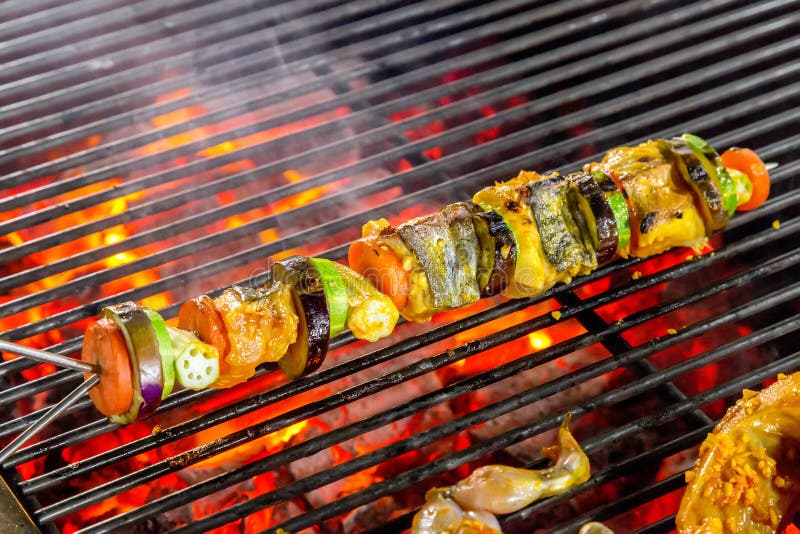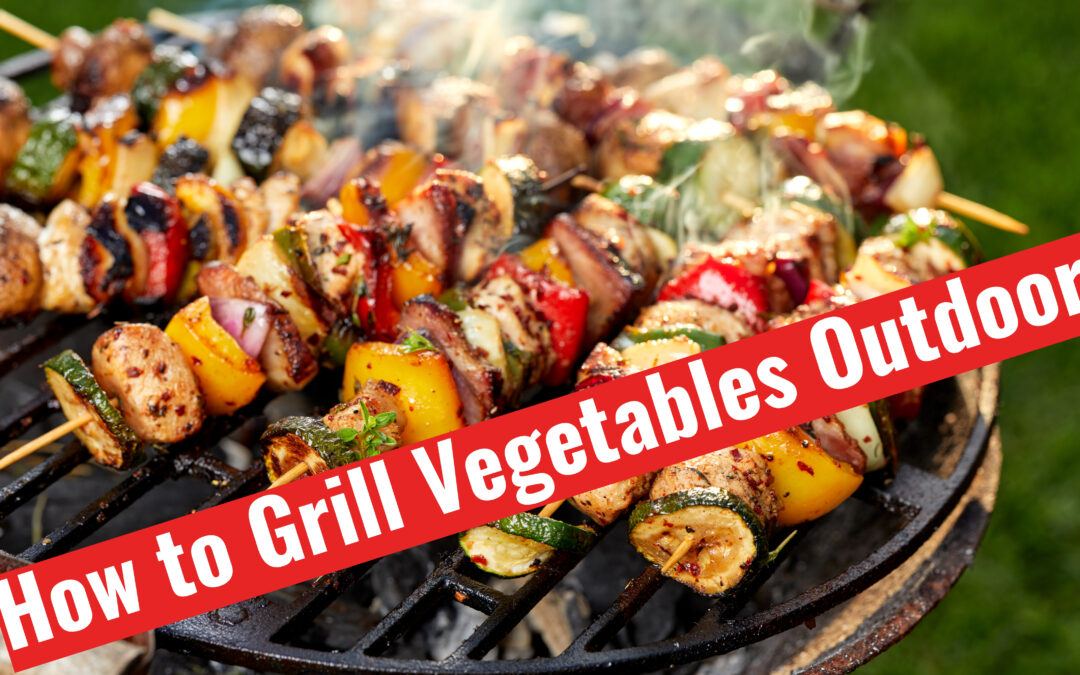==================
A Caveat and Affiliates
First off, a little caveat: within my articles you will find affiliate links, meaning if you buy them, I get a small commission. Your cost is not affected. In addition, I am an Amazon Associate and I earn from qualifying purchases on Amazon.
And yes, if I say that I recommend a product here, it means I truly believe it is a good product. I refuse to recommend any product that I have not researched and believe to be a good value.
Even better, I provide you with a very clear picture of the product, it’s use, and the probable value.
Earning your trust is important to me. I run this website myself and the commissions and donations help support the site.
Sound reasonable and fair enough? Let’s continue to the article.
==================
How to Grill Vegetables Outdoors
Summer has just left, but you’re still thrilled about grilling outdoors? Well, that makes the two of us. Grilled veggies on the barbecue are just too hard to resist, aren’t they? Worry no more! We will show you how to grill vegetables outdoors.
Grilling, in general, is much more complicated than ordinary cooking. But while grilling meat is something we’ve all heard about or tried at least once, grilling vegetables is vastly different. Veggies are just so much easier to mess up, which is why you need some tips and tricks to do it successfully.
Trust me; you don’t have to go to culinary school to pull this off. We’re going to teach you how to grill vegetables outdoors so that you can do it at home. Get your aprons ready, and let’s start grilling!

Tips and Techniques for Grilling Vegetables Outdoors
-
Chop your veggies
This is a vital part of your preparation for grilling vegetables. Chop your vegetables into evenly-sized pieces to avoid cooking them unevenly. In addition, chopping your veggies will aid your cooking time as smaller pieces tend to cook faster than larger pieces of vegetables.
When chopping vegetables, you want to make sure that they are not too small to fall through the grates of your grill. But if you can’t help but cut them very small, you can always use tools to help keep your veggies from falling through. We’ll talk about that here.
One tip is to cut round produce into thin rounds. That way, you can have more surface area to work with, resulting in crispy, yummy round veggies. It’s great for long vegetables to cut them into long, thin pieces (if you want them to grill fast) or simply chop them in half (if you’re going to grill them slowly).
-
Seasoning is a must
If you want to make all the trouble of grilling worth it, make sure you season your vegetables before tossing them in the grill. This is a crucial step in making sure that you’re making the tastiest, most mouthwatering grilled vegetables on the block. Your seasonings depend on your preference and taste, but, make sure to add them generously.
I like to marinate my vegetables for about thirty minutes or longer so that the food absorbs the flavor before cooking. If that isn’t enough, you can even season your vegetables while cooking. There’s no right way to do this, but your way.
While we’re here, you might also want to brush up some oil (use ones that have a high smoke point, like vegetable, canola, or pomace oil) on your vegetables to prevent dehydration while grilling. Be careful not to add too much, though. Just make sure that your vegetables are thinly coated in oil in all their nooks and crannies.
-
Know your tools
We can’t stress this enough. If you want to make your life easier, start picking up the right tools for your grilling shenanigans! These are some of the essential grilling tools you can use when grilling vegetables outdoors.
1. Metal Tongs
You need metal tongs to lay your vegetables on top of your grill and to flip and pick them up when needed. Some essential factors in choosing good tongs are the sturdiness of the material and the length of the handle. You need about 12-inch tongs to prevent burning and to give you optimal control of the tongs.
2. Brush Basting
A basting brush is a helpful grilling tool that you typically use to baste or sauce your food before or during the grilling process. You use this brush to oil up your veggies and add liquid seasoning or marinade sauce to your vegetables for grilling vegetables outdoors. Like with tongs, brushes with long handles are great for grilling.
3. Grill basket
In grilling vegetables, a grill basket is often a must. You use a grill basket when grilling vegetable pieces too tiny not to fall through the grill’s grates. For instance, you use this to grill green peas, chopped onions, chopped zucchini, or cherry tomatoes.
The best way to use the grill basket is to preheat it first before placing your vegetables on it. Olive oil is an excellent oil to toss your small veggies with. Toss or flip your vegetables in the grill basket every three to four minutes, and they’re good to go.
4. Metal skewers
This is another tool to use for grilling small pieces of chopped vegetables. Stick your vegetables on a metal skewer to keep them from rolling around or falling through the grill. You can make vegetable kebabs using metal skewers, which is great as great can be!
5. Other tools for grilling small vegetables
If you don’t want to use a grill basket or a metal skewer to grill your fresh produce, consider using a foil pack or a stainless baking tray. These are even easier to find than the two we mentioned before. You can use the baking tray as you would with a grill basket by tossing your veggies around.
The foil pack works best when using root vegetables such as sweet potatoes, radishes, and potatoes. Make a packet using a foil sheet and seal your veggies in. After that, you can simply place the foil pack on the grill and let it sit for around fifteen minutes before enjoying your steamy, grilled vegetables.
-
Observe proper cooking time and grill temperature
Cooking time and grill temperature can either make or break your grilled vegetables. Thus, you have to make sure you’re cooking your food under the recommended cooking time on a grill that’s set at the right temperature.
There’s no standard cooking time for all vegetables because each has different sizes, thicknesses, and shapes. Luckily, we have tips to guide you on how to grill different kinds of vegetables. In general, though, the best way to know whether your veggies are ready is to check them every few minutes or seconds while on the grill.
As for the grill temperature, since vegetables generally cook quicker than meat, you need the temperature to be on a medium level. The recommended temperature for grilling vegetables is around 350 to 450 degrees Fahrenheit. Refer to the thermometer on your grill to set the temperature.
-
Grilling everyone’s favorite vegetables!
We think you’re ready to grill your vegetables outdoors, so here are some tips on how to grill different kinds of vegetables.
– Asparagus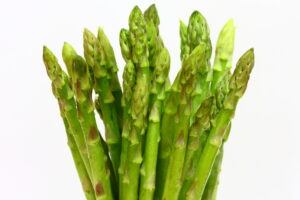
Most of the time, asparagus doesn’t need chopping. Just scrape off the thick outer skin of the asparagus before oiling it and seasoning it to give it that good flavor. Heck, you don’t even need fancy seasonings and spices because salt and pepper are good enough for asparagus.
Let this vegetable sit on the grill for about 5 to 10 minutes, occasionally turning to cook all sides. You may cook this in a grill basket or directly on the grill. If you choose the latter, make sure to place it perpendicular to the grill to keep it from falling through.
– Broccoli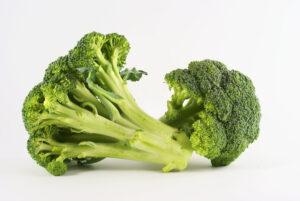
Broccolis are commonly grilled in foil, but you can always grill them directly or in a grill basket. The important thing when grilling broccolis is that you steam them before grilling. Afterward, season and oil them up before grilling.
You know your broccoli is ready when you see charred spots. Cooking time for broccoli is around 6 to 8 minutes.
– Bell Pepper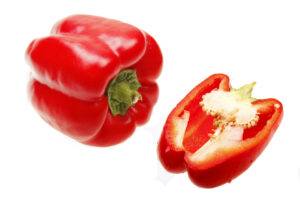
Grilling peppers is a common necessity for many dishes, which is why you can do this even on a stove. For bell peppers, you can either grill them whole or cut them in half or quarters. Essentially, the pieces should be large enough not to fall through the grates of the grill.
Get rid of the ribs and the seeds before oiling them up and adding your seasonings. After that, they’re ready for grilling. Expose each side to the heat for about 4 to 5 minutes.
– Corn
You can grill corn with or without the husk. If you decide to grill corn without the husk, peel it and remove the husk. Brush it with your oil and seasoning of choice before placing directly on the grill for about 30 minutes, turning it every once in a while. You can also cover it with a foil sheet before grilling.
Grilling corn with the husk isn’t that much different, except you omit the part where you peel it and remove its husk. You also have to soak the corn in water for 10 to 15 minutes, so the husk doesn’t catch fire—oil and season as usual before grilling for 20 to 30 minutes.
– Mushroom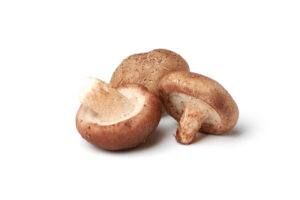
Grilling mushrooms in a skewer is the most common way to grill these veggies. Simply remove the stems before brushing them with oil and seasonings. Once ready, grill your skewered mushrooms for approximately 7 to 10 minutes.
– Potatoes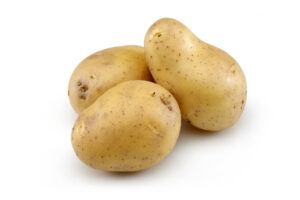
Like broccoli, you will see the best results when you steam or boil potatoes first before grilling. Afterward, you should effortlessly cut into these vegetables and then marinate and oil them. Grill them for around 9 to 12 minutes, and they’re good to eat!
Conclusion:
I’m sure you’ve enjoyed these tips and techniques on how to grill vegetables outdoors. Summer or not, your cravings for grilled vegetables are valid. Since you know how to grill vegetables now, you can set up your backyard for vegetable barbecue all year round!
Read More:
